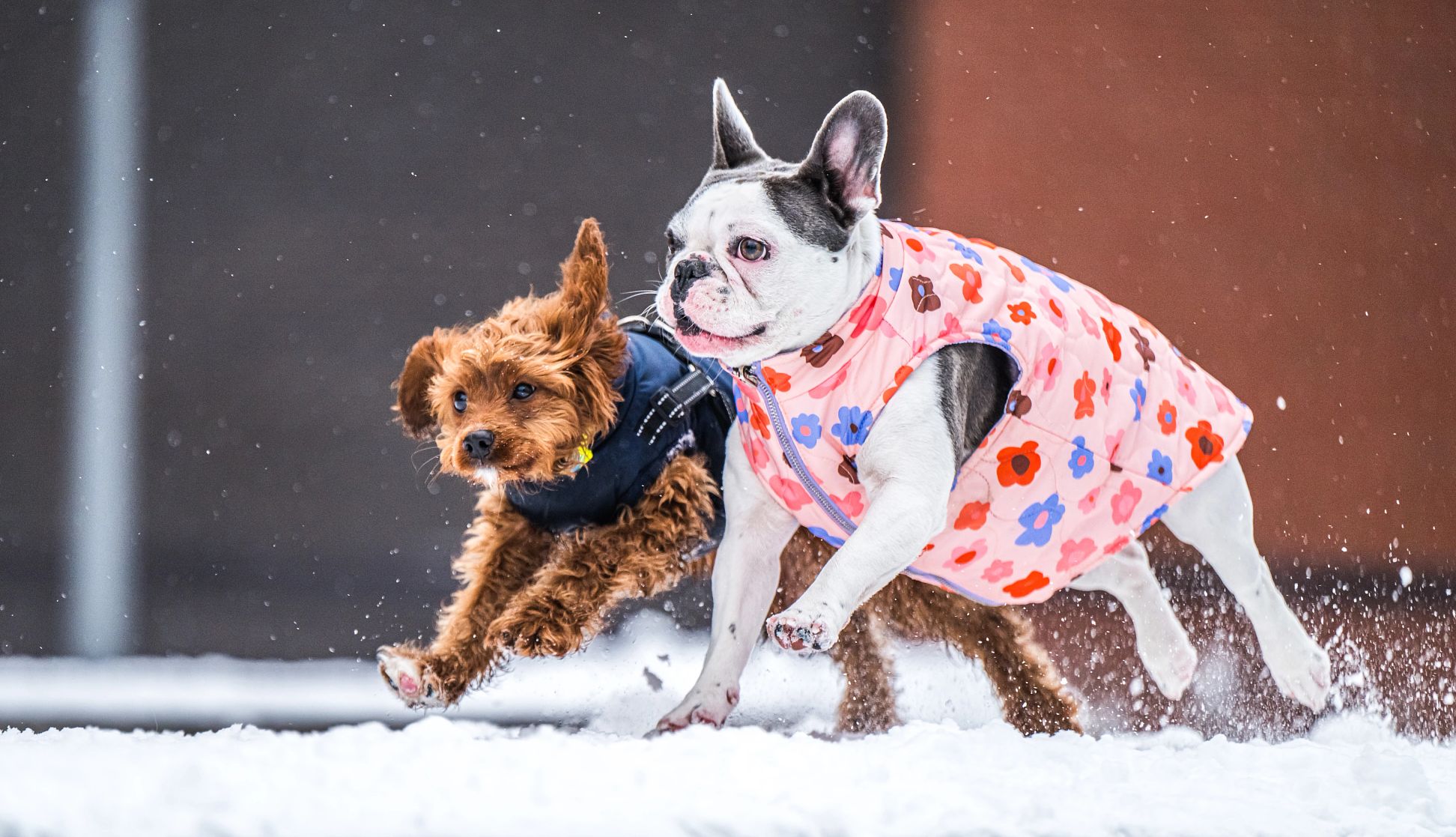AARP Hearing Center


Dog mom Temma Martin has two pit bulls: 13-year-old Petunia and 3-year-old Clyde, who’s also part Chihuahua. At first glance, the pair look tough as nails. But when the mercury drops, Petunia and Clyde shiver like the sensitive souls they really are.
“Our dogs have very short coats, like seal fur, and none produce undercoats in the winter. We live in Utah, so they need protection from our freezy winters,” says Martin, 56, of Salt Lake City.
To keep her doggos warm, Martin dresses them in fleece jackets, checks for ice on the steps so they don’t slip, and shovels paths in the snow so they can get to the yard to pee — especially important for Clyde on account of his short legs, Martin says.
What might look like pampering is actually protection, says Rover.com veterinary medical adviser Rebecca Greenstein, a veterinary practice owner in Toronto. “Pet owners through no fault of their own sometimes overestimate their pets’ cold tolerance,” Greenstein says. “They figure, ‘Oh, they’re animals. They’re covered in fur. They must be heartier.’ And that can sometimes be a quite dangerous assumption.”
That’s true of not only dogs, but also cats and other common pets, including birds, fish and even reptiles. Keeping all of them safe in winter requires pet owners to be vigilant about seasonal risks and quick to mitigate them.
Limit their outdoor time as much as possible. Like humans, pets can suffer from hypothermia and frostbite, extreme cases of which can lead to illness, disability or even death. For that reason, it’s important to keep pets indoors when temperatures are at or below freezing, says veterinarian Heather Berst, medical lead at animal health company Zoetis.
“Be sure to bring your pets inside overnight, and during the day they need to be watched when outside in the cold,” advises Berst, who says smaller dogs, pets with thinner coats, and younger and older animals are especially vulnerable.
Provide protection if pets can’t or won’t come inside. Even pets that spend much of their time outside should come inside, if only for the night. If they won’t — an outdoor cat who doesn’t come when you call, for instance — you need to provide it with protection, Berst says. For outdoor cats, she suggests putting out a cat shelter filled with towels and bedding in which to burrow. You can purchase shelters or create your own out of a plastic tote, a foam cooler and some straw. For dogs, an insulated and well-sealed doghouse may provide protection for short periods; however, experts recommend all dogs come indoors when temperatures reach freezing.
Keep the thermostat warm enough for pets. To save money on utilities, many people dress in layers and keep the heat low, or turn the heat way down when they leave the house. Because pets can’t decide to throw on a sweater like you can, however, it’s important to be mindful of your thermostat.
“Your pets will be happy indoors at the same temperatures we keep our houses at in the winter — 60 to 70 degrees” Fahrenheit, Berst says.





































































More From AARP
9 Ways to Entertain Your Dog Indoors
From training to toys, here’s how to help confined canines conquer boredomHow Much Do You Know About Winter Safety?
See how well you’re prepared for the cold
How to Stay Safe in Extreme Cold
Older people especially face dangers in lower temperatures and wind chills
Recommended for You